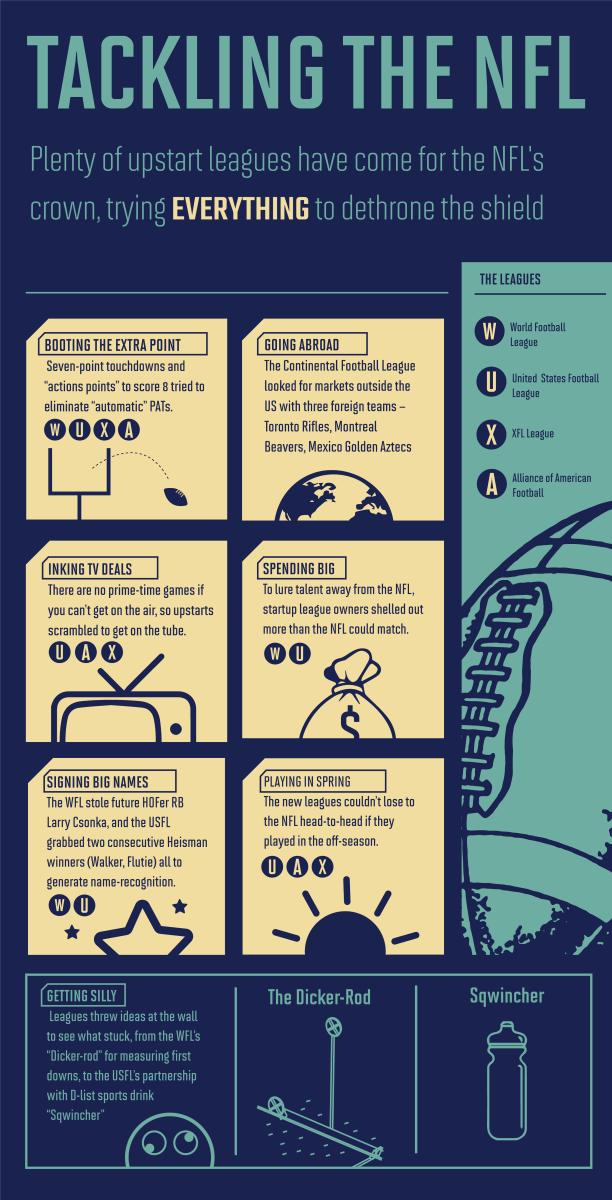The Alliance of American Football, and the Oddities of Alternative Leagues

On Feb. 9, the Alliance of American Football will become the latest startup football league, only it’s not exactly competing with the NFL. The Alliance—with teams in eight markets, including Birmingham, Orlando, Salt Lake City and San Diego, and with coaches such as Steve Spurrier and Dennis Erickson—doesn’t want to compete with the NFL but rather become a kind of feeder league where players can hone their craft in hopes of making the jump to the NFL. In the latest installment of The Narrative podcast, I talk to figures involved in the Alliance’s launch about their strategy, and how they plan to learn from the mistakes of leagues that came before them. Listen here:
Check out The Narrative podcast on Soundcloud and iTunes.
The AAF’s startup forefathers went to great lengths to try to edge the NFL. The Continental League (1965-69) went international, placing teams in Canada and Mexico while also opening up its rosters to minority players who might find it hard to get into the still mostly white NFL. The World Football League (1974-75) tried to dazzle fans, with singular names, bright vibrant colored jerseys (and footballs), and the far-less-scandalous-than-it-sounds “Dicker-Rod” to measure first downs. The USFL (1983-85) tried to out-spend the NFL, putting their money down to steal potential players and take the big league to court. The XFL (2001) tried to beat down the NFL with violent rules, WWE cameos and, of course, tough nicknames on the back of their jerseys. All of those leagues failed, but the NFL adopted some of their ideas. Here are some ideas that didn’t get picked up:

